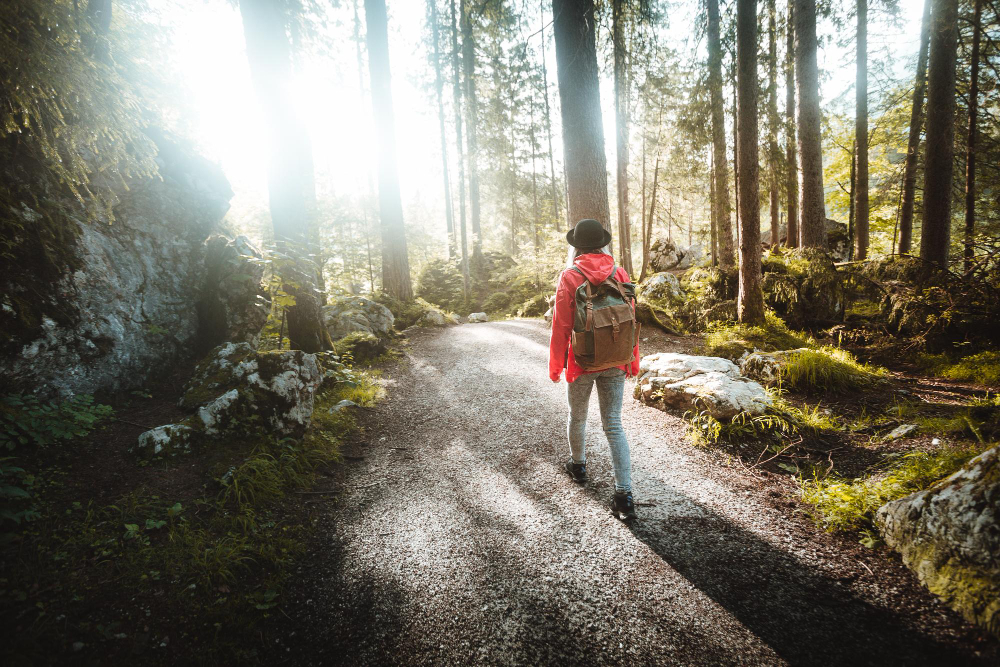On long trips, sharing close quarters can challenge the dynamics of intimacy in any relationship. Whether staying in compact hotel rooms or spending extended periods in confined spaces, partners need to find ways to respect both personal boundaries and the need for connection. Establishing an effective balance between personal space and intimacy is essential to avoid emotional exhaustion and relationship strain.
Identifying Personal Space Needs
Personal space is a fundamental need. While partners may enjoy each other’s company, limits exist on how much closeness can happen without resulting in burnout. Physical and emotional comfort depends on respecting these boundaries, particularly in the extended environments typical of prolonged travel. The need for space differs between people, with some requiring more solitude than others. Identifying these differences ahead of time can prevent misunderstandings and promote emotional well-being.
It’s common for one partner to feel more comfortable with closeness while the other may need moments of isolation to recharge. The key to harmony is recognizing these preferences and communicating them effectively. For instance, opting for solo walks or finding a quiet corner to read can reinforce boundaries without leading to disconnection. These small practices help maintain individuality and prevent the relationship from feeling stifled by constant proximity.
Partners who openly express the need for personal space can avoid feelings of enmeshment. It’s also important to engage in conversations about physical boundaries without harboring resentment. Time apart can be framed as a way to enhance the connection upon reuniting. Rather than viewing personal space as a barrier, it can be seen as an opportunity for self-reflection, ultimately improving the relationship.
The Role of Communication and Boundaries
Communication is central to maintaining personal space during long trips. Open discussions about boundaries should happen early and regularly, helping both partners understand their needs. It’s important to use positive and affirming language, steering away from accusations and focusing on collaborative solutions. For example, saying “I feel better after some alone time” is more understanding than “You’re smothering me.” The former encourages a peaceful dialogue centered on mutual improvement.
Boundaries can take various forms, not all of which are purely emotional. Sometimes physical boundaries—such as choosing separate activities or allocating solo time—can help couples stay balanced. Solo exploration during traveling may involve seeing different attractions or spending time on personal hobbies. Building these individual moments into the travel itinerary can alleviate tension and promote a healthy dynamic.
Timing is also important. Conversations about emotional needs are more effective when they’re calm, avoiding moments of heightened stress or irritation. Regular check-ins ensure that both partners’ needs are being met as circumstances evolve. This balance requires constant adjustment depending on the length of the trip, current mood, and individual situations. Well-defined boundaries foster closeness, not inhibit it.
Cultivating Shared Moments and Individual Growth
Balancing individual growth with shared moments is essential on long trips with a partner. While personal space is vital, shared experiences can strengthen the relationship. Engaging in activities together, such as hiking, sightseeing, or cooking a meal, can create lasting memories. These moments of connection provide the right balance between intimacy and personal boundaries, ensuring both partners feel valued and connected. Through shared memories, partners can enhance their bond, while still respecting personal space.
Yet, finding time for individual pursuits is equally important. Each partner should have the opportunity to explore personal interests or hobbies that may not align with their partner’s preferences. Whether it’s reading, writing, or soaking up the local culture alone, these personal moments can enrich the relationship by introducing new experiences and conversations. Consider how modern relationships can respect this balance by ensuring both partners have room for self-expression, akin to partners who seek to find successful men in their circles to engage in stimulating discussions. Balancing shared and individual time this way allows each person to return to the relationship rejuvenated and full of novel insights, nurturing both personal and collective growth.
Practical Applications on Long Trips
Respecting personal space requires thoughtful planning. When embarking on long trips, agreeing on boundaries beforehand can be beneficial. For example, setting aside particular times for solo activities ensures that each partner gets the space they need. One person may choose to explore a nearby park while the other enjoys a different interest.
Incorporating hobbies into the travel schedule is another effective way to relieve relational tension. For instance, if one partner enjoys running early in the morning, this time can be used for solitude, allowing them to return feeling refreshed before reuniting for shared activities.
Respecting each partner’s different interests throughout the journey helps prevent feelings of intrusion. This careful consideration of individual preferences ensures that time apart feels harmonious, not a source of conflict.
Regular emotional check-ins can create a low-pressure system of communication. These ongoing discussions help ensure both partners align emotionally, preventing small problems from becoming larger ones.
Psychological Aspects of Personal Space
Personal space plays a psychological role in relationships. Different attachment styles affect how people perceive space and intimacy. Those with more anxious tendencies might view space as threatening, while others may find it comforting. Understanding these perspectives can help smooth out the travel experience.
Couples with more secure attachment styles typically navigate the balance between space and intimacy with greater ease, relying on trust and open communication. For couples with less secure dynamics, setting clear boundaries can foster emotional safety and stability.
Personal boundaries allow each individual to maintain privacy and autonomy, which is necessary for emotional well-being. These boundaries can also serve as buffers during conflicts, giving partners the chance to process their feelings privately without escalating tension.
Intimacy Strengthened by Rejuvenation
Long trips can place strain on relationships if space isn’t balanced effectively. Maintaining a healthy relationship during travel requires rejuvenation. Creating intentional distance allows partners to recharge and return with new focus and appreciation for each other.
Time apart shouldn’t be viewed as a negative. Instead, moments of separation create opportunities for personal growth, enriching the relationship when the partners come back together.


